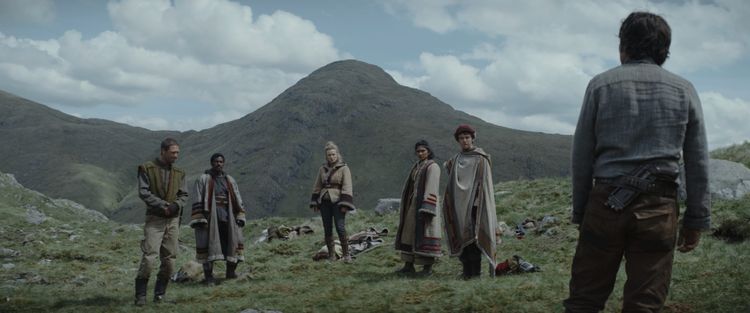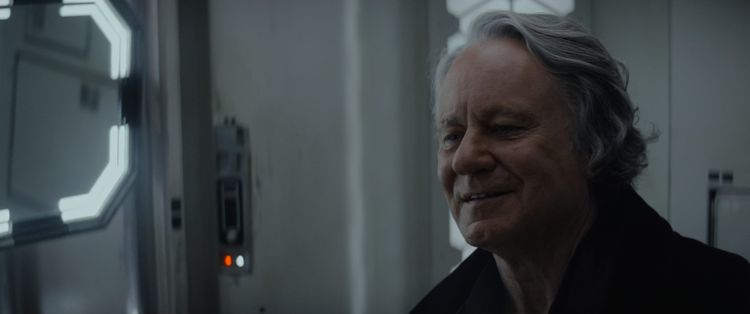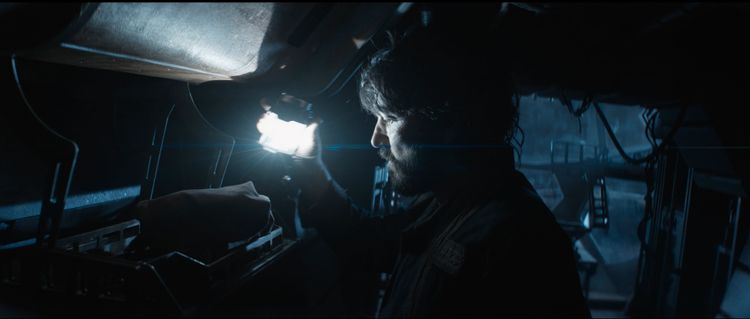Kirsten and Natalie #5: Star Wars and Spider-Man

(Kirsten and Natalie is a series tracing American womanhood as portrayed through the films of Kirsten Dunst and Natalie Portman. Read the introductory post here.)
Natalie Portman and Kirsten Dunst play effectively the same role in, respectively, the Star Wars prequel trilogy (released in 1999, 2002, and 2005) and Sam Raimi's Spider-Man trilogy (released in 2002, 2004, and 2007). They're both playing the girlfriend of a bold, powerful hero who sacrifices much to get what he needs. They're both playing the person those heroes give up the most to protect.
And Dunst's Mary Jane Watson is miles more interesting than Portman's Queen (later Senator) Padmé Amidala.
There are a bunch of good explanations for why that might be the case. Portman is stranded in a love story that exists primarily to check off boxes on a list, with a performer (Hayden Christensen) who largely has the opposite of chemistry with her. Meanwhile, Dunst is working with Sam Raimi, who's much better at directing actors than George Lucas. At this stage in their respective careers, I find Dunst a better performer than Portman, but Dunst also never gets saddled with a line as poorly written as "Hold me like you did by the lake on Naboo," so I should cut Portman some slack.
Yet I think the difference in quality runs deeper than those obvious, surface-level qualities. Indeed, the difference here might be in how we think about women characters in these blockbuster extravaganzas to begin with.
What do we want out of a hero's love interest anyway?
"The hero's love interest" is one of the most thankless roles in blockbuster cinema. Often, the character ends up being a nag, trying to keep the hero from doing hero things. And though I am using gender-neutral language, the number of blockbuster movies where the hero's love interest is a man is... very small indeed.

The reason these characters are so often so thankless likely stems from how their roles become foregone conclusions. We know the hero will fall in love with someone, and we know who the woman lead of the movie is. Fighting against the gravity of that story function to craft something truly interesting is incredibly difficult, as you might expect. Even blockbusters that add an extra dimension to the love interest rarely push beyond those added details. And why should they? These characters have specific story functions to fulfill, and once they've proved their love and devotion to the protagonist, they've done their job and can get out of the move until its climax.
Most love interest characters exist to remind us the hero has a human side. They are often used to heighten the stakes of the movie's climax, as both Padmé and MJ are frequently utilized in their respective trilogies. Even when well-written and well-conceived, these characters struggle to rise beyond "competently handled." When not handled so well, they can feel perfunctory or worse.
"Perfunctory or worse" is the category Padmé largely falls into. She exists solely as a tragic function of the storyline. Anakin Skywalker's fall from grace necessarily involves the rupture of his relationship with his wife, first because he attacks her in a rage and later because she dies of, uh, a broken heart. By and large, Padmé Amidala exists to be Anakin's wife and Luke and Leia's mom. She exists to die tragically. She exists solely to fulfill a story function.
There are ways a character like that can be compelling. It's not hard to imagine a version of this trilogy where the love story proved gripping, convincing us of the passion between Anakin and Padmé, one that caused them to risk everything in the name of being together. Indeed, the story beats of the trilogy — particularly the second film, Attack of the Clones — correspond to a romance that did just that. Anakin and Padmé escape to a far-off, isolated place where they can be alone. There's something that draws them together. They cannot resist it. When Anakin starts giving in to his worst impulses, Padmé can't help but support him. After all, the bad choices he makes (like avenging his mother's death) could be read as heroic in many other stories of this ilk. It's just that in the Star Wars universe, such choices inevitably lead to evil.
To make the love interest compelling in such a preordained narrative, however, requires more than just a compelling performer. It requires a strong script and a director interested in highlighting emotion. George Lucas, for all his strengths, is neither of those things. For as good of a performer as Portman is, she cannot escape the binds that the story places her in. That's especially evident in the scene of hers everybody most remembers, when she says, late in the third film, Revenge of the Sith, "So this is how liberty dies: with thunderous applause." It's the one moment when Padmé's larger ambitions align with the story Lucas is telling in such a way that she doesn't end up as window dressing. For a moment, we glimpse the political idealist who could have been a central figure in this story rather than a side character.
Every time I watch the prequels, I come away a little more impressed with Lucas's rigid adherence to an older form of filmmaking and a little more convinced that his sensibilities are the exact wrong match for his story. In a thematic sense, the prequels are among the most provocative pieces of political art ever produced at the big-budget blockbuster level. They are about the inevitability of neoliberalism collapsing into fascism on the back of income inequality, made a solid decade before that became a genuine concern in mainstream American politics. They are made by an old hippie ringing the bell about the warnings buried in American history.
Yet Lucas is also a staid traditionalist when it comes to actual filmmaking. The last hour of Revenge of the Sith is the most compelling material in the trilogy. That largely stems from how Lucas finally lets go of his neo-traditionalist style and starts moving his camera like he's making a movie in 2005. As the Republic falls, the filmmaking shifts toward something more modern. It would be a neat trick if the traditionalist filmmaking had achieved its larger goals, but it primarily served to obscure the film's political message.
Star Wars as a franchise captures the aesthetics of fascism really, really well. Generally, Lucas and his collaborators intend that as a critique of how seductive those aesthetics are, but because his filmmaking largely presents the aesthetics of fascism in the way they were most effectively conveyed in the past, he accidentally ends up bolstering the opposite of what he's trying to say in terms of his visuals. If you're wondering why this seems to be the major franchise with the biggest problems with toxic fans at the moment, well, I might start with that central contradiction.
Regardless, the prequels have no room for Padmé. She is a story function and nothing more, and every time Portman is on screen (save for at least part of the last hour of the final movie), she seems completely lost amid the special effects.
Compare that to Sam Raimi's Spider-Man movies, and you start to see how these films could use their love interest characters differently.
Let us now praise Mary Jane Watson

One of the sneakiest things Raimi's Spider-Man trilogy does is ground its dramatic stakes in character — and in one character specifically. Every film in the trilogy centers on the question of whether Peter Parker and Mary Jane Watson will figure their shit out and get together already.
That focus may be why the movies get away with always having the same climax. All three films end with some variation on "the villain kidnaps Mary Jane to use as bait, and Peter must do something amazing to save her," but all three films significantly advance the relationship in those showdowns. The movies use each confrontation to spur a deliberate choice on Mary Jane's part, so she has a character arc within her specific plot function. In every film, she has to choose how she feels about Peter (and Harry in the last movie), and in every film, she cleaves more tightly to Peter, even as she realizes just how terrible of an idea that might be.
Raimi and his screenwriting collaborators (especially Alvin Sargent) realize that the hero's girlfriend serves as the tether making sure the hero seems human enough. And thus, the easiest way to make the inhuman superheroics of the climax feel grounded is to insert a story for that girlfriend. Even if Mary Jane's story is as simple as "I just learned the man I love is also Spider-Man" (as happens in the second film), she has an implicit choice to make that drives the action of the rest of the film. None of these films resolve when Peter saves the day; all of them resolve when Mary Jane chooses him over what might seem to make more sense.
This quality is what old, grumpy people like myself are talking about when we say the Raimi movies are "about people" and the later MCU Spider-Man films are not. Those later movies are fun, and Tom Holland and Zendaya offer their own entertaining spins on Peter and MJ. But the crux of every film in the MCU trilogy rests on the shoulders of Peter, not MJ, and that makes all the difference in how little they feel like they're about real people, rather than sprites in a computer.
Plus, there's the Kirsten Dunst of it all. She's incredible in these movies, even when the third saddles her briefly with a "Peter flirted with another girl, and now I hate him!!" plot straight out of a Saved by the Bell episode. Dunst sells it so well that I didn't quite realize what the movie had done until the plot point was in the past. Crucially, Dunst makes sure that Mary Jane seems both like someone worth falling in love with and someone who will ultimately be okay if things with Peter don't work out. She's got her own shit going on, even if it sometimes doesn't work out. She is a fully rounded character, a rarity in these films.
Mary Jane Watson stands alongside Superman's Lois Lane as the two classic superhero love interests who are more than just "the girlfriend." You can tell whole stories about Mary Jane and Lois that don't involve superpowers, and you can do so fairly easily. (Indeed, Lois had a very successful comic of her own for quite a while there.) What's fascinating about Mary Jane is that the men who created her never intended for her to be Peter's serious love interest. They were focused on Gwen Stacey, who was meant to be Peter's true dream girl. But Mary Jane kept turning up, and she kept having a fun, spiky energy that kept Peter off-guard, and the writers kept writing more for her to do, and now, many decades later, Mary Jane is the girl Peter always ends up with, no matter how you twist the archetypes.
There's something in Mary Jane's origins that speaks to our collective pop-cultural struggle to create love interests as compelling as the heroes they're in love with. The team at Marvel didn't expect Peter and Mary Jane to end up together, so they let themselves make her feel like more of a human being, which consequently made her seem like a better match for him in the end. Similarly, Lois Lane was someone Superman initially pined for, which meant that she had to be so rad and cool that you could imagine a god among men wanting nothing more than to let her beat him to all the best scoops.
Yet how rarely have our big-screen storytellers learned this lesson? How often do we see movies where the hero is in love with the girl because he's supposed to be in love with the girl? And how often is she just meant to be a beacon of purity, who will shine brightly in the darkness and guide him home? How often is she a symbol instead of a person? There are so many more Padmés than there are MJs.
Raimi's movies have always held a special place in my heart. Yet it was only in revisiting them for this series that I realized why: They give the hero's girlfriend a reason to exist within the world of the film beyond "the hero loves her," while also understanding that the hero loving her is vital in and of itself.
Late in the second film, Mary Jane, having chosen Peter over her much more sensible astronaut fiance, asks him, "Isn't it about time somebody saved your life?" It's corny as hell, but God, does it work. It works because it realizes that the act of choosing someone, not because the story demands it of us but because we cannot live without them, is a fundamentally hopeful one. That act contains its own life-saving power because none of us can exist without other people to bear us up. Every Spider-Man movie understands how lucky New York is to have Spider-Man. Only Sam Raimi's Spider-Man movies understand how lucky Peter is to have MJ.

In July: Kirsten Dunst and Natalie Portman starred in Oscarbait movies that went head-to-head in the awards season of 2003. So next time, we're going to look at Mona Lisa Smile and Cold Mountain. And we're going to have a GREAT TIME, she said, through a tightly clenched jaw.
Talk back to me: Who's your favorite "hero's girlfriend" in blockbuster movies? Give me your hot takes in the comments or by replying to the email!
Programming note: I'm on vacation, so next week's newsletter will either be a repeat or a freelance piece! I'll see y'all in the free newsletter again on July 4, when I hear Emily Rogers might be coming to town...
What I've been up to: Recently, at Vox, I've written about why movies about selkies are so dang good and the horrific sexual abuse scandal unfolding in the Southern Baptist Convention.
Brown, the author of This Little Light, remains skeptical. Yes, the SBC could set up bodies to which those being abused could appeal, it could provide protection for other whistleblowers in the organization, and it could set up a restitution fund. Those steps, however, would have to be through groups that were independent from SBC leadership and had authority that existed outside the organization, steps she said the SBC would be unlikely to take. Instead, she fears these problems will be handled within their local churches, the very place many of these survivors suffered abuse.
“They must get past this notion of telling survivors to go to the local church,” Brown said. “All that does is send bloody sheep back to the den of the wolves who savaged them, and people are horribly wounded in that process.”
What you missed if you're not a subscriber to Episodes: Amy Tate watched Logistics, which is over 35 days long and is, thus, the longest movie ever made. Then she emerged to tell you about how it's weirdly hypnotic and fascinating.
What is it like to watch Logistics? For one thing, it’s completely silent. The camera shoots from a fixed position, whether on a truck, train, or container ship, and there is no lighting beyond what the environment of the shot provides. Depending upon the ship's latitude, five to 11 hours a day at sea would be during the night. Since there’s almost no light out at sea, that means hours of watching darkness. And even when the sun is up at sea, the film usually consists of a container ship traveling through similar-looking stretches of water. You do not watch Logistics without a lot of multi-tasking. (My choice? I stuck with the lengthy, nautical theme and read Moby Dick.)
Read me: If you've seen the terrifically entertaining Indian action epic RRR, you might have been like me and known just enough about modern Indian politics to find the closing credits (with their enormous heads) just a little troubling. Fortunately, the critic Ritesh Babu puts the entire movie in context and explains where it fits into the modern Indian landscapes both political and cinematic. It's a terrific read, even at nearly 10,000 words.
[Rajamouli] has never had to truly consider and process these stories, these characters and fictions beyond his hyper-comfortable, luxurious, privileged upper caste Hindu lens. He's never had to actually think about them critically and unpack them. His lens is that of a child in awe, his cinema that of emotions, eschewing 'politics', which is why he says in that very same interview that his movie is an ode to friendship and is not about patriotism. And he's likely being entirely honest, which betrays his own blinders and blindness. Rajamouli is someone who understands the potency and the power of that which he invokes, whether they be ideas or images or real life figures, but he cannot begin to fully unpack the meaning of those things.
Watch me: Since I'm not writing regular TV criticism in my day job anymore, I can't tell you to watch the new season of For All Mankind, but, uh... watch the new season of For All Mankind! It remains one of TV's very best shows, and the season premiere made me hoot and holler with joy.
And another thing... Libby and I have been using this random red sauce recipe that we found on a recipe blog for over a decade, and it remains one of the most satisfying things I make. And now I will link you to that recipe blog!
Opening credits sequence of the week: I have been working my way through the (somewhat interminable) HBO oral history Tinderbox, and the brief section on John from Cincinnati reminded me of how much that show's opening credits ascend into Heaven, much like John from Cincinnati himself. (Letterdrop's built-in Grammarly function hated that last sentence!)
A thing I had to look up: It's beyond the scope of this article, but basically every onscreen portrayal of MJ I've ever seen has been at least pretty good. That made me wonder why that was the case, which led to a lot of research into the history of Mary Jane Watson -slash- "MJ" more generally. I came away with a new appreciation for her!
This week's reading music: "Vindicated" by Dashboard Confessional
Episodes is published twice per week. Mondays alternate between a free edition on various topics and a subscriber-supported edition where I recap TV shows of interest. Fridays offer pop culture thoughts from freelance writers. The Friday edition and the biweekly recaps are only available to subscribers. Suggest topics for future installments via email or on Twitter. Read more of my work at Vox.





Member discussion